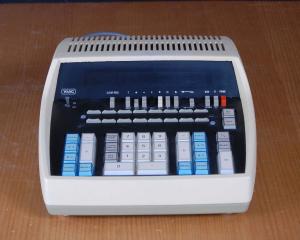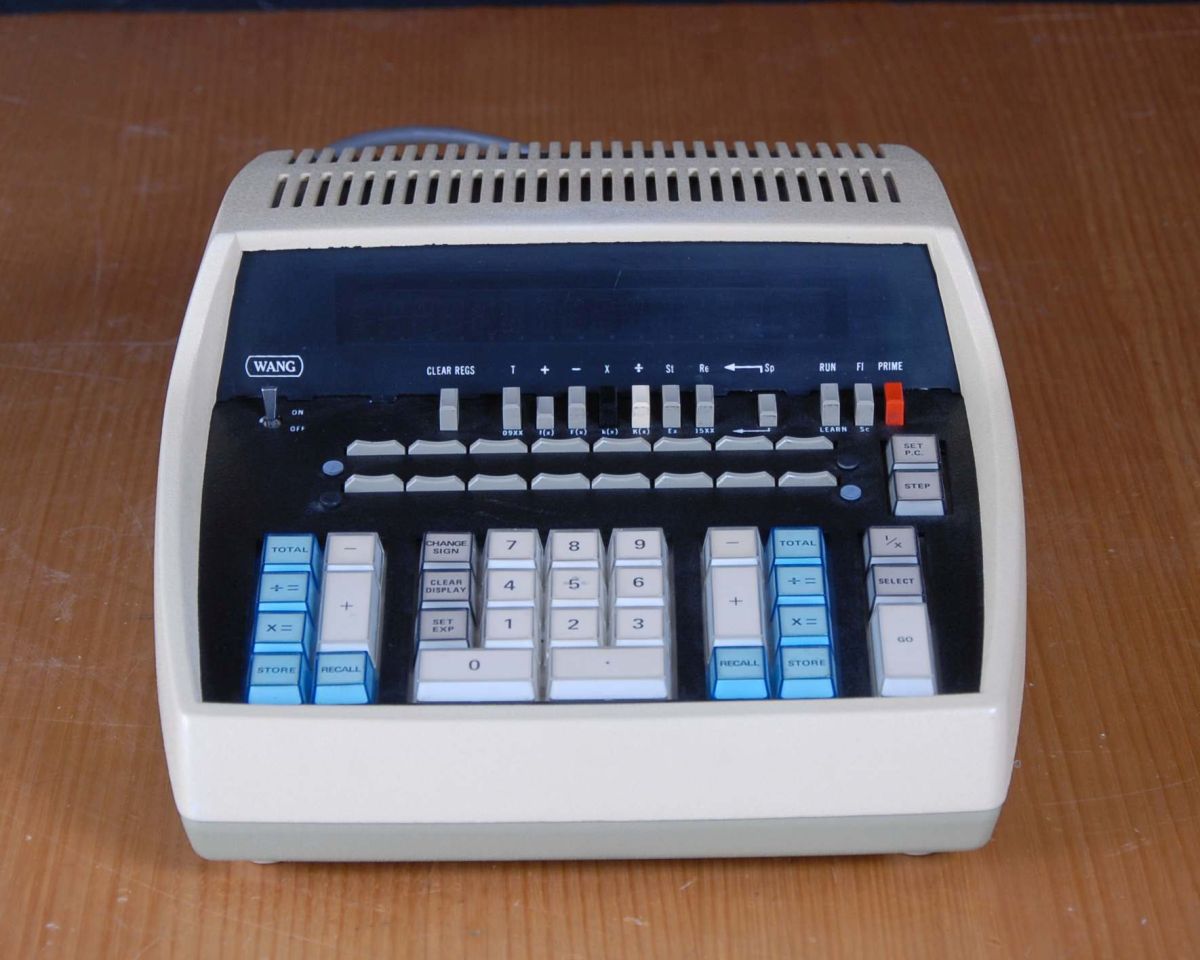Wang 452 Calculator
The 400 series was the final series of Wang calculators, and the most sophisticated. It carried on the design philosophy of the 700 series, that of a basic computing and logic engine driven by a stored microcode to perform the functions of a calculator.
The 400 series was first released in 1972 and uses small and medium scale integrated circuits. Just on 100 ICs are required to build the entire calculator. In a major departure from Wang’s traditions, core memory has been abandoned for the newly-availabled static RAM IC memory and the 452 uses Intel’s first generation 1101 RAM chips. 16 of these 256 x 1 bit chips provide 1k of 4-bit words.
The code to drive the hardware logic engine is contained in two sets of early generation mask-programmed ROMs.
- 2k of 20-bit words hold the basic calculator microprogram
- 4k of 4-bit words hold 4k of 4-bit keystroke code sequences that provide the higher mathematical functions
Different models of the 400 series were available with different higher mathematical functions but all shared the same hardware and basic microcode ROMs. Different opcode ROMs provided the different higher functions.
Wang may have abandoned its signature core memory technology but the quirky and complex user interface is clearly derived from all preceding Wang calculators, right back to the LOCIs. Left and right accumulators live on and a set of 16 buttons each perform multiple functions depending upon the “up” or “down” state of certain pushbuttons and the use of one or other prefix keys. Guillaume Tello’s site has a very good description of the operation of a Wang 452. Considerable mathematical power was available but only after climbing a rather steep learing curve.
While the 452 is a very sophisticated machine its construction was rather outdated by the 1970s and its user interface may have been a barrier when compared with other machines of that era. Large-scale integration allowed other manufacturers to place most of the functionality of a 452 type machine onto just a few chips and these machines could be smaller and cheaper. The HP 35 was introduced in 1972 and while it could not perform all of the advanced math functions of the 400 series, it was built with just 3 ICs, could fit in a pocket and sold for under $400.
Dr Wang recognised that his company had lost the lead in high-end calculators and that calculators were in any case destined to become low-value commodity items. After the 400 series he turned the company’s attention to word processing and minicomputers, and once again defined a new market and became its dominant force, at least for a time.

